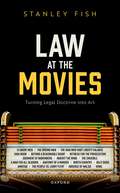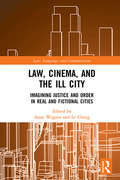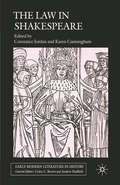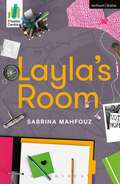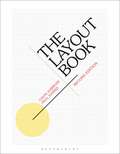- Table View
- List View
Law, Art and the Commons
by Merima BruncevicThe concept of the cultural commons has become increasingly important for legal studies. Within this field, however, it is a contested concept: at once presented as a sphere for creativity, democratic access and freedom of speech, but one that denies property rights and misappropriates the public domain. In this book, Merima Bruncevic takes up the cultural commons not merely as an abstract notion, but in its connection to physical spaces such as museums and libraries. A legal cultural commons can, she argues, be envisioned as a lawscape that can quite literally be entered and engaged with. Focusing largely on art in the context of the copyright regime, but also addressing a number of cultural heritage issues, the book draws on the work of Deleuze and Guattari in order to examine the realm of the commons as a potential space for overcoming the dichotomy between the owner and the consumer of culture. Challenging this dichotomy, it is the productive and creative potential of law itself that is elicited through the book’s approach to the commons as the empirical basis for a new legal framework, which is able to accommodate a multitude of interests and values.
Law as Art (Applied Legal Philosophy)
by Gary P. BagnallLaw as Art presents a radical new legal theory, the Law as Art Hypothesis, which conceives law, not as a system of rules, but as a distinctive kind of art work. Law is differentiated as art by the Law as Compound Artistic Type Hypothesis, which uses the heuristic metaphor of the Operatic Music Drama, the most elementally complex compound art form, to develop an idea of legal art as a distinctive empowered text, supported by the arts of drama, painting, sculpture, dress-design, architecture, rhetoric and communication to form an elementally developed yet integrated unitary art work. Part I develops a new realist epistemology to support a contemporary action-type ontology of art, differentiated as art by virtue of its artistic value. Part II opens with a critical review of the arts in legal theory, before detailing the Law as Art and Law as Compound Artistic Type Hypothesis and locating them within contemporary scholarship. Legal philosophical implications are considered and there is an acronym key and glossary, bibliography and index.
Law as Art (Applied Legal Philosophy)
by Gary P. BagnallLaw as Art presents a radical new legal theory, the Law as Art Hypothesis, which conceives law, not as a system of rules, but as a distinctive kind of art work. Law is differentiated as art by the Law as Compound Artistic Type Hypothesis, which uses the heuristic metaphor of the Operatic Music Drama, the most elementally complex compound art form, to develop an idea of legal art as a distinctive empowered text, supported by the arts of drama, painting, sculpture, dress-design, architecture, rhetoric and communication to form an elementally developed yet integrated unitary art work. Part I develops a new realist epistemology to support a contemporary action-type ontology of art, differentiated as art by virtue of its artistic value. Part II opens with a critical review of the arts in legal theory, before detailing the Law as Art and Law as Compound Artistic Type Hypothesis and locating them within contemporary scholarship. Legal philosophical implications are considered and there is an acronym key and glossary, bibliography and index.
Law at the Movies: Making Change in the Networked Public Sphere (Law and Literature)
by Thomas J BillardTransgender rights have emerged as an important topic of everyday conversation across the country in recent years and become, in many ways, the flashpoint du jour of the American culture wars. During the Trump presidency in particular, transgender people were thrust onto the center stage of US politics. Faced with unrelenting hostility and an increasingly complicated media system, transgender activists crafted new communication strategies to fight for their equality, stall attempts to undermine their rights, and win the support of large swathes of the public. In Voices for Transgender Equality, Thomas J Billard offers an insider's view into transgender activism during the first two years of the Trump administration. Drawing on extensive on-the-ground observation at the National Center for Transgender Equality, Billard shows how these activists developed an unlikely blend of online and offline strategies to saturate a diverse ecology of national news outlets, local and community media outlets across the country, and both public and private conversations across multiple social media platforms with voices in support of their cause. Moreover, these activists navigated the complex flows of information and ideas among these different domains of the communication system as they worked to shape the national conversation on transgender rights. As Billard argues, this movement occurred at a very particular time in the development of the media system, with "new" media shaping the movement in important ways that are both generalizable to other social movements and unique to transgender activism. Including rich storytelling and insightful analysis, Voices for Transgender Equality makes a compelling case of what it takes to make social and political change in a world transformed by digital media. Along the way, Billard provides key insights into the new business-as-usual of mediated politics and valuable lessons for more effective activism.
Law at the Movies: Turning Legal Doctrine into Art (Law and Literature)
by Prof Stanley FishThis book asks "How can legal doctrine be turned into filmic art?" By "legal doctrine" Stanley Fish does not mean the sonorous abstractions that usually accompany the self-presentation of law--Justice, Equity, Equality, Liberty, Autonomy, and the like. Rather he has in mind the specific rules and procedures invoked and analyzed by courts on the way to declaring a decision--lawyer/client confidentiality, the distinction between interdicted violence and the violence performed by the legal system, the interplay of positive law and laws rooted in morality, the difference between civilian law and military law, the death penalty, the admissibility of different forms of evidence. In the movies he discusses, these and other points of doctrine and procedure do not serve as a background, occasionally visited, to the substantive issues that drive the plot and provide the characters with choices; they declare the plot, and character is formed and tested in relationship to their demands. Apparently technical matters are pressed until they occupy both foreground and background and become the movie's true subject. If large, abstract concepts emerge, they emerge at the back end of doctrine and are, in effect, produced by doctrine. These are not law-themed movies; they are movies about the unfolding of legal process.
Law at the Movies: Turning Legal Doctrine into Art (Law and Literature)
by Prof Stanley FishThis book asks "How can legal doctrine be turned into filmic art?" By "legal doctrine" Stanley Fish does not mean the sonorous abstractions that usually accompany the self-presentation of law—Justice, Equity, Equality, Liberty, Autonomy, and the like. Rather he has in mind the specific rules and procedures invoked and analyzed by courts on the way to declaring a decision—lawyer/client confidentiality, the distinction between interdicted violence and the violence performed by the legal system, the interplay of positive law and laws rooted in morality, the difference between civilian law and military law, the death penalty, the admissibility of different forms of evidence. In the movies he discusses, these and other points of doctrine and procedure do not serve as a background, occasionally visited, to the substantive issues that drive the plot and provide the characters with choices; they declare the plot, and character is formed and tested in relationship to their demands. Apparently technical matters are pressed until they occupy both foreground and background and become the movie's true subject. If large, abstract concepts emerge, they emerge at the back end of doctrine and are, in effect, produced by doctrine. These are not law-themed movies; they are movies about the unfolding of legal process.
Law, Cinema, and the Ill City: Imagining Justice and Order in Real and Fictional Cities (Law, Language and Communication)
by Anne Wagner Le ChengThis book uses film and television as a resource for addressing the social and legal ills of the city. It presents a range of approaches to view the ill city through cinematic and televisual characterization in urban frameworks, political contexts, and cultural settings. Each chapter deconstructs the meaning of urban space as public space while critically generating a focus on order and justice, exploring issues such as state disorder, lawlessness, and revenge. The approach presents a careful balance between theory and application. The original and novel ideas presented in this book will be essential reading for those interested in the presentation of law and place in cultural texts such as film.
Law, Cinema, and the Ill City: Imagining Justice and Order in Real and Fictional Cities (Law, Language and Communication)
by Anne Wagner Le ChengThis book uses film and television as a resource for addressing the social and legal ills of the city. It presents a range of approaches to view the ill city through cinematic and televisual characterization in urban frameworks, political contexts, and cultural settings. Each chapter deconstructs the meaning of urban space as public space while critically generating a focus on order and justice, exploring issues such as state disorder, lawlessness, and revenge. The approach presents a careful balance between theory and application. The original and novel ideas presented in this book will be essential reading for those interested in the presentation of law and place in cultural texts such as film.
Law for Artists: Copyright, the obscene and all the things in between
by Blu TirohlWritten especially for professional artists and those studying the visual arts, Law for Artists is an accessible guide to those aspects of law that impact on artists and their work. It encompasses a comprehensive range of creative practices including fine art, photography, the graphic and plastic arts, animation, illustration, applied and media arts, as well as fashion, textile and product design. As one of the few academics working in this field Blu Tirohl clearly explains the legal principles - such as intellectual property, censorship, freedom of expression and criminal law - that are relevant to artists working in a range of disciplines. In order to illustrate these key concepts the book includes an engaging collection of examples of artists who have come into conflict with the law, demonstrating precisely the challenges faced by creative practitioners. The author also explores how the establishment co-opts transgressive artists; bringing about a range of contradictions that create legal inconsistencies. While the focus is primarily on UK law, the reader is also given ample information to understand how European law affects them. An entire chapter is also dedicated to the comparative study of US Law through well-known cases, ensuring students have a well-rounded knowledge of the concepts that they need to consider in a professional context. The book also provides additional resources including a list of useful websites, a glossary of key terms, as well as a list of statutes and cases. Law for Artists is an invaluable resource to professional practitioners and art graduates, as well as the academics who instruct them. This insightful publication, the first of its kind, helps introduce artists to the professional practice skills needed to ensure they are well-equipped to deal with working life.
Law for Artists: Copyright, the obscene and all the things in between
by Blu TirohlWritten especially for professional artists and those studying the visual arts, Law for Artists is an accessible guide to those aspects of law that impact on artists and their work. It encompasses a comprehensive range of creative practices including fine art, photography, the graphic and plastic arts, animation, illustration, applied and media arts, as well as fashion, textile and product design. As one of the few academics working in this field Blu Tirohl clearly explains the legal principles - such as intellectual property, censorship, freedom of expression and criminal law - that are relevant to artists working in a range of disciplines. In order to illustrate these key concepts the book includes an engaging collection of examples of artists who have come into conflict with the law, demonstrating precisely the challenges faced by creative practitioners. The author also explores how the establishment co-opts transgressive artists; bringing about a range of contradictions that create legal inconsistencies. While the focus is primarily on UK law, the reader is also given ample information to understand how European law affects them. An entire chapter is also dedicated to the comparative study of US Law through well-known cases, ensuring students have a well-rounded knowledge of the concepts that they need to consider in a professional context. The book also provides additional resources including a list of useful websites, a glossary of key terms, as well as a list of statutes and cases. Law for Artists is an invaluable resource to professional practitioners and art graduates, as well as the academics who instruct them. This insightful publication, the first of its kind, helps introduce artists to the professional practice skills needed to ensure they are well-equipped to deal with working life.
Law in Practice: The RIBA Legal Handbook
by John WevillIntensely practical and clearly written, Law in Practice: the RIBA Legal Handbook is the RIBA’s jargon-free, professional guide to the law as it relates to a construction project. It addresses all the fundamental, up-to-date issues of contemporary construction law, allowing architects to make sound judgements, avoid disputes, and run projects on a safer basis. This new edition has been fully updated to reflect the new RIBA Plan of Work 2013 – the industry’s framework for construction projects – as well as recent case law and other legal updates that the practising architect needs to be aware of. Why does an appointment need to be written? Why does language matter? What is a novation? What does an overall cap on liability mean, and how can you convince a client to agree one? How do you assess an extension of time? When should you notify your insurer of a potential claim? Law in Practice answers all of these questions and many more.
Law in Practice: The RIBA Legal Handbook
by John WevillIntensely practical and clearly written, Law in Practice: the RIBA Legal Handbook is the RIBA’s jargon-free, professional guide to the law as it relates to a construction project. It addresses all the fundamental, up-to-date issues of contemporary construction law, allowing architects to make sound judgements, avoid disputes, and run projects on a safer basis. This new edition has been fully updated to reflect the new RIBA Plan of Work 2013 – the industry’s framework for construction projects – as well as recent case law and other legal updates that the practising architect needs to be aware of. Why does an appointment need to be written? Why does language matter? What is a novation? What does an overall cap on liability mean, and how can you convince a client to agree one? How do you assess an extension of time? When should you notify your insurer of a potential claim? Law in Practice answers all of these questions and many more.
The Law in Shakespeare (Early Modern Literature in History)
by C. Jordan K. CunninghamLeading scholars in the field analyze Shakespeare's plays to show how their dramatic content shapes issues debated in conflicts arising from the creation and application of law. Individual essays focus on such topics such as slander, revenge, and royal prerogative; these studies reveal the problems confronting early modern English men and women.
Lawrence of Arabia (BFI Film Classics)
by Kevin JacksonLawrence of Arabia is widely considered one of the ten greatest films ever made - though more often by film-goers and film-makers than by critics. This monograph argues that popular wisdom is correct, and that Lean's film is a unique blend of visionary image-making, narrative power, mythopoetic charm and psychological acuteness.
Lawrence of Arabia (BFI Film Classics)
by Kevin JacksonLawrence of Arabia is widely considered one of the ten greatest films ever made - though more often by film-goers and film-makers than by critics. This monograph argues that popular wisdom is correct, and that Lean's film is a unique blend of visionary image-making, narrative power, mythopoetic charm and psychological acuteness.
Law's Documents: Authority, Materiality, Aesthetics
by Katherine Biber Priya Devii Vaughan Trish LukerIlluminating their breadth and diversity, this book presents a comprehensive and multidisciplinary view of legal documents and their manifold forms, uses, materialities and meanings. In 1951, Suzanne Briet, a librarian at the Bibliotheque Nationale in Paris, famously said that an antelope in a zoo could be a document, thereby radically changing the way documents were analysed and understood. In the fifty years since this pronouncement, the digital age has introduced a potentially limitless range of digital and technological forms for the capture and storage of information. In their multiplicity and their ubiquity, documents pervade our everyday life. However, the material, intellectual, aesthetic and political dimensions and effects of documents remain difficult to pin down. Taking a multidisciplinary and international approach, this collection tackles the question, what is a legal document?, in order to explore the material, aesthetic and intellectual attributes of legal documentation; the political and colonial orders reflected and embedded in documents; and the legal, archival and social systems which order and utilise information. As well as scholars in law, documentary theory, history, Indigenous studies, art history and design theory and practice, this book will also appeal to those working in libraries, archives, galleries and museums, for whom the ongoing challenges of documentation in the digital age are urgent and timely questions.
Law's Documents: Authority, Materiality, Aesthetics
by Katherine Biber, Trish Luker and Priya VaughanIlluminating their breadth and diversity, this book presents a comprehensive and multidisciplinary view of legal documents and their manifold forms, uses, materialities and meanings. In 1951, Suzanne Briet, a librarian at the Bibliotheque Nationale in Paris, famously said that an antelope in a zoo could be a document, thereby radically changing the way documents were analysed and understood. In the fifty years since this pronouncement, the digital age has introduced a potentially limitless range of digital and technological forms for the capture and storage of information. In their multiplicity and their ubiquity, documents pervade our everyday life. However, the material, intellectual, aesthetic and political dimensions and effects of documents remain difficult to pin down. Taking a multidisciplinary and international approach, this collection tackles the question, what is a legal document?, in order to explore the material, aesthetic and intellectual attributes of legal documentation; the political and colonial orders reflected and embedded in documents; and the legal, archival and social systems which order and utilise information. As well as scholars in law, documentary theory, history, Indigenous studies, art history and design theory and practice, this book will also appeal to those working in libraries, archives, galleries and museums, for whom the ongoing challenges of documentation in the digital age are urgent and timely questions.
Law's Moving Image
by Leslie J Moran Emma Sandon Elena Loizidou Ian ChristieThis book is an essential introduction to the complex issues and debates in the field of law and film. It explores interconnections that are usually ignored between law and film through three main themes: A Fantastic Jurisprudence explores representations of law in law Law, Aesthetics and Visual Technologies focuses on the visual aspects of law's moving image Regulation: Histories, Cultures, Practices brings together work on different dimensions and contexts of regulation, censorship, state subsidies and intellectual property to explore the complex inter-relationship between the state, industry and private regulation. Law's Moving Image is an innovative, multi-disciplinary contribution to the rapidly growing fields of study in law and film, law and visual culture, law and culture, criminology, social and cultural studies. It will be of interest to students and academics involved in these areas.
Law's Moving Image
by Leslie Moran Elena Loizidou Ian Christie Emma SandonThis book is an essential introduction to the complex issues and debates in the field of law and film. It explores interconnections that are usually ignored between law and film through three main themes: A Fantastic Jurisprudence explores representations of law in law Law, Aesthetics and Visual Technologies focuses on the visual aspects of law's moving image Regulation: Histories, Cultures, Practices brings together work on different dimensions and contexts of regulation, censorship, state subsidies and intellectual property to explore the complex inter-relationship between the state, industry and private regulation. Law's Moving Image is an innovative, multi-disciplinary contribution to the rapidly growing fields of study in law and film, law and visual culture, law and culture, criminology, social and cultural studies. It will be of interest to students and academics involved in these areas.
Layla's Room (Modern Plays)
by Sabrina MahfouzRespect women, respect girls. Respect yourselves. Remember you are everyone who's gone before you and you are nobody that has ever been, so make it count, make it special, make a difference, make people listen, love the women who have loved you and watch us make the world move to a better place. For Layla, every day is a battleground.The pay gap, the thigh gap, over-sexed pop and selfies that are photoshopped – they're just part of the world she lives in.But that world is about to change.While breaking out of her bedroom – and with drama, comedy, poetry and music as her weapons – Layla breaks down and makes sense of the realities, difficulties and absurdities of teenage life in the UK today.Collected from a bespoke national survey, the voices of a thousand UK teens are brought to life in Layla. Their ambitions, concerns, role-models and regrets are woven together by award-winning Sabrina Mahfouz and theatre company Theatre Centre, offering a hard-hitting, yet hopeful, story.Layla's Room received its world premiere at Redbridge Drama Centre on 15 September 2016 in a production by Theatre Centre. It is ideal for students and young performers between 16 and 18 years old.
Layla's Room (Modern Plays)
by Sabrina MahfouzRespect women, respect girls. Respect yourselves. Remember you are everyone who's gone before you and you are nobody that has ever been, so make it count, make it special, make a difference, make people listen, love the women who have loved you and watch us make the world move to a better place. For Layla, every day is a battleground.The pay gap, the thigh gap, over-sexed pop and selfies that are photoshopped – they're just part of the world she lives in.But that world is about to change.While breaking out of her bedroom – and with drama, comedy, poetry and music as her weapons – Layla breaks down and makes sense of the realities, difficulties and absurdities of teenage life in the UK today.Collected from a bespoke national survey, the voices of a thousand UK teens are brought to life in Layla. Their ambitions, concerns, role-models and regrets are woven together by award-winning Sabrina Mahfouz and theatre company Theatre Centre, offering a hard-hitting, yet hopeful, story.Layla's Room received its world premiere at Redbridge Drama Centre on 15 September 2016 in a production by Theatre Centre. It is ideal for students and young performers between 16 and 18 years old.
Layout and Composition for Animation
by Ed GhertnerThis essential, hands-on guide is filled with examples of what a composition should look like and example of poorly designed layouts. Spot potential problems before they cost time and money, and adapt creative solutions for your own projects with this invaluable resource for beginner and intermediate artists. With Beauty and the Beast examples and Simpson character layouts, readers will learn how to develop character layout and background layout as well as strengthen composition styles with a creative toolset of trick shot examples and inspirational case studies. A companion website will include further technique based tools, finalized layout and composition examples and tutorials for further artistic skill development.
Layout and Composition for Animation
by Ed GhertnerThis essential, hands-on guide is filled with examples of what a composition should look like and example of poorly designed layouts. Spot potential problems before they cost time and money, and adapt creative solutions for your own projects with this invaluable resource for beginner and intermediate artists. With Beauty and the Beast examples and Simpson character layouts, readers will learn how to develop character layout and background layout as well as strengthen composition styles with a creative toolset of trick shot examples and inspirational case studies. A companion website will include further technique based tools, finalized layout and composition examples and tutorials for further artistic skill development.
The Layout Book (Required Reading Range)
by Gavin Ambrose Mr Paul HarrisA fascinating exploration of this fundamental aspect of graphic design, The Layout Book explains the hows, whys and why-nots of the placing of elements on a page or screen layout. A historical overview of the subject is followed by a systematic look at key theoretical principles and practical applications.Offering a huge array of potential layout options and with over 200 color illustrations from some of the world's leading design studios, whether you are working in print or digital media this book encompasses a variety of creative approaches. The second edition has also been updated to include interviews with practising designers, as well as new exercises to aid readers in their own explorations.Invaluable for design students looking for a better understanding of layout design, and inspiring for working designers, The Layout Book proves itself as a graphic design must-have.
The Layout Book (Required Reading Range)
by Gavin Ambrose Paul HarrisA fascinating exploration of this fundamental aspect of graphic design, The Layout Book explains the hows, whys and why-nots of the placing of elements on a page or screen layout. A historical overview of the subject is followed by a systematic look at key theoretical principles and practical applications.Offering a huge array of potential layout options and with over 200 color illustrations from some of the world's leading design studios, whether you are working in print or digital media this book encompasses a variety of creative approaches. The second edition has also been updated to include interviews with practicing designers, as well as new exercises to aid readers in their own explorations.Invaluable for design students looking for a better understanding of layout design, and inspiring for working designers, The Layout Book proves itself as a graphic design must-have.


